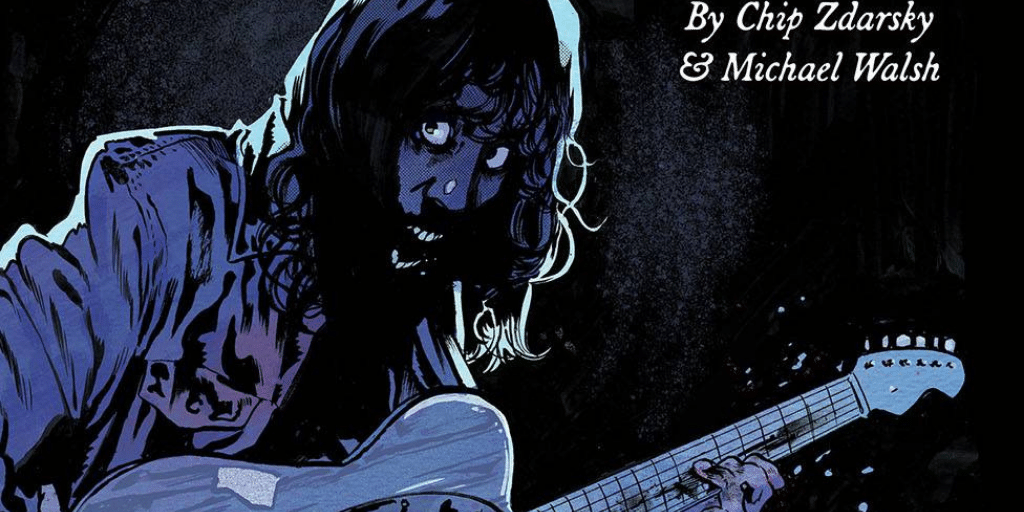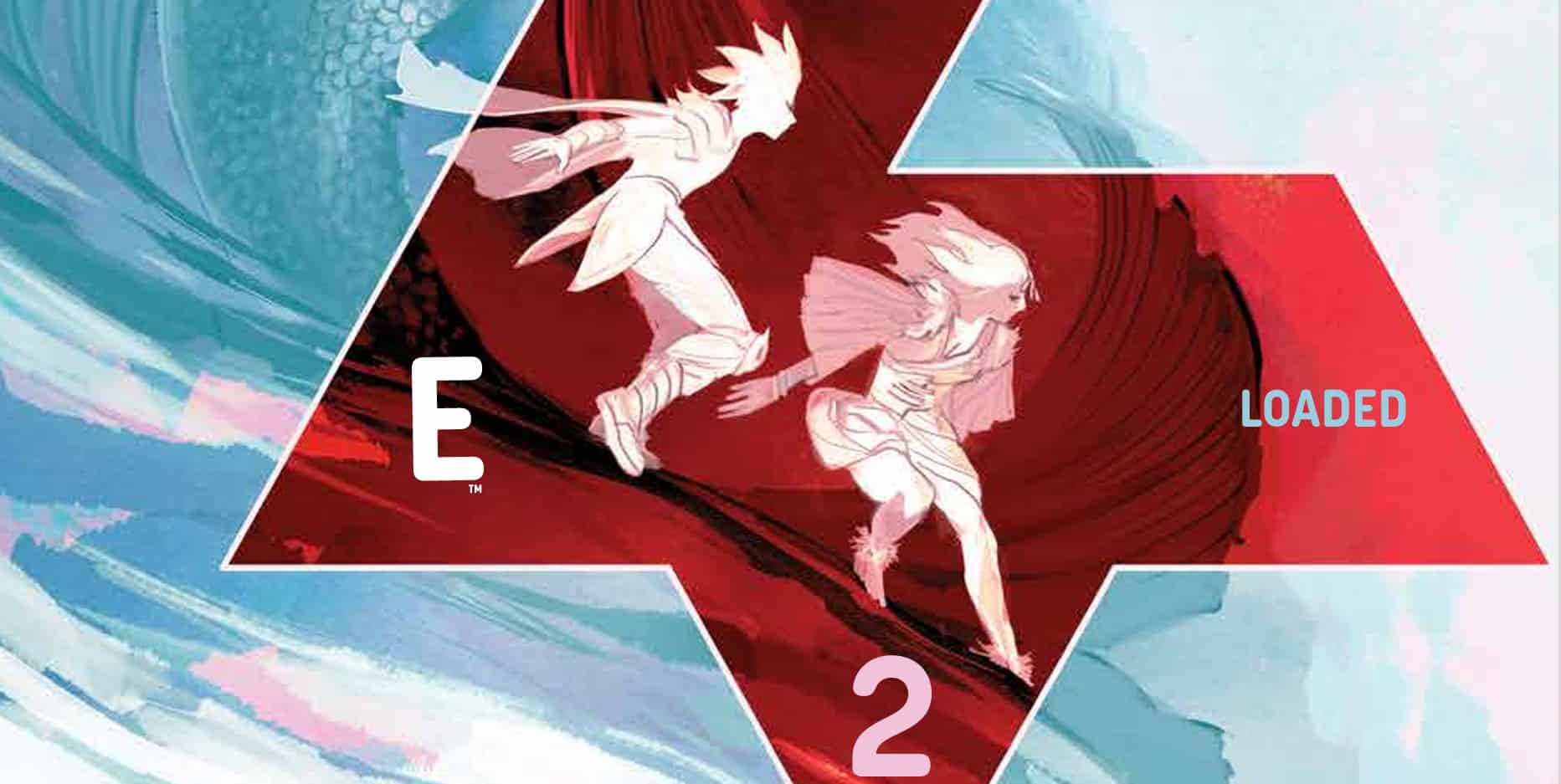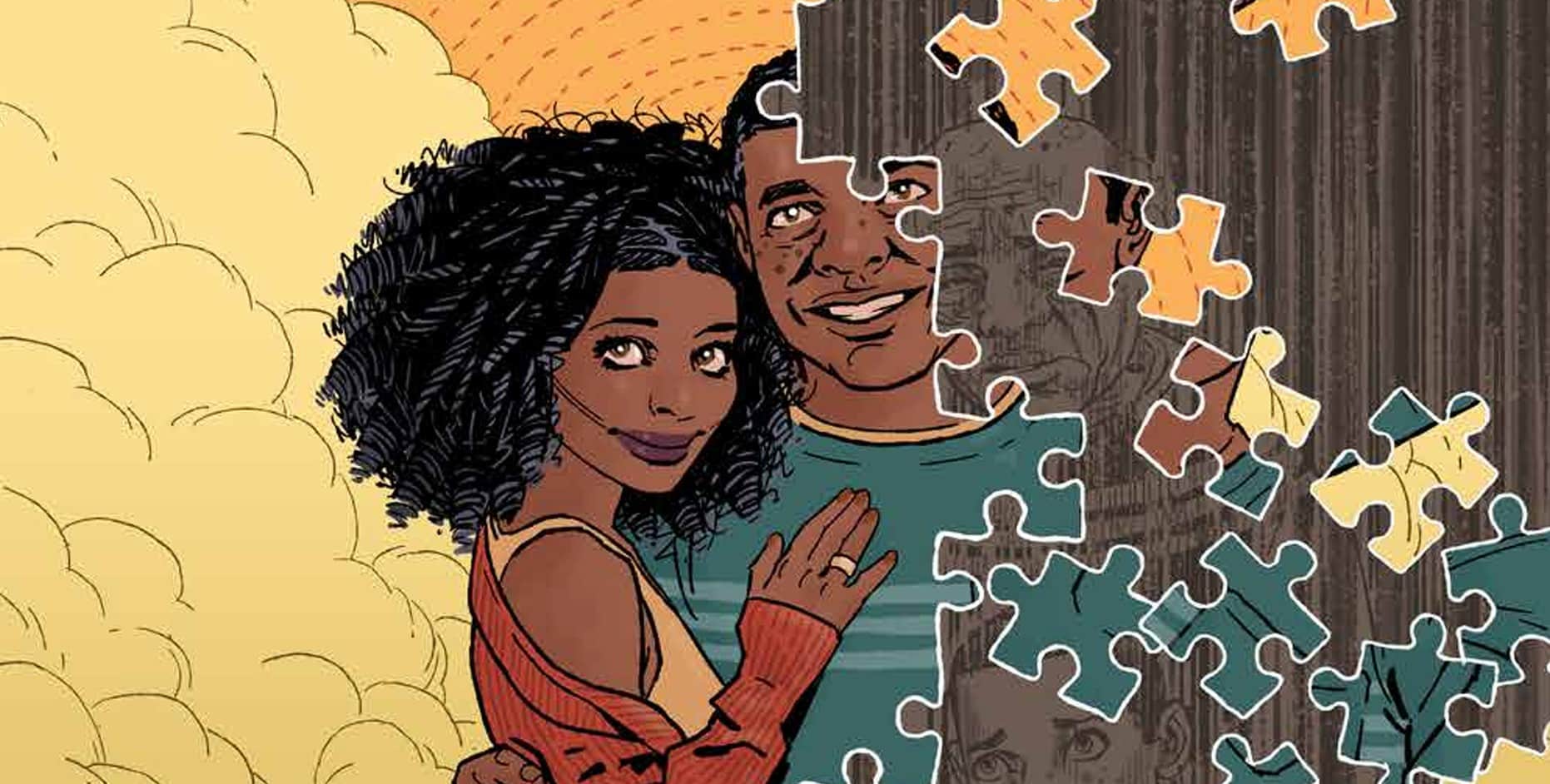Eisner-winning artist Michael Walsh (Star Wars, Black Hammer/Justice League) teams with an all-star lineup of collaborators on a new horror anthology miniseries for mature readers. Each issue will tell a tale of terror in a shared supernatural world.The story starts in 1978 with a failing rock band whose fortune suddenly changes when they find the mysterious Silver Coin. Little do they know that fame comes with a cost, and a curse is always hungry. Let’s pick up The Silver Coin #1 by Michael Walsh and Chip Zdarsky.
Armaan Babu: Hello! Armaan here, reporting for co-review duty, in what’s been my first horror anthology comic for too long a while — and I have to say, I’m very, very glad it was this one. Are you a big fan of horror comics yourself, Mark?
Mark Turetsky: Hey Armaan, happy to be reviewing this one with you! I’ve read a few here and there, but they’re not my main thing. What attracted me to this one is a) Michael Walsh and b) the concept of inverting the usual setup of anthology comics, with the artist staying consistent and the writers switching out with each issue. And also, of course, the great lineup of writers on the book, starting with Chip Zdarsky. Shall we get into it?
Rock vs. Disco: A Conflict as Old as Time

MT: This story focuses on Ryan, a guitarist in a small-town rock band. It’s 1978, and rock music is on the wane because all the kids are into disco now. Do you know much about the history of disco?
AB: I do not, but am eager to learn some.
MT: This takes place one year after the release of the movie Saturday Night Fever, which propelled disco into the mainstream. All of a sudden, the style of R&B-influenced dance music became super popular, and so it was a situation where a small-town music club like we have in this issue might move over to a disco format. Disco got so popular that in 1979, even James Brown, the Godfather of Soul, tried to rebrand himself as the Original Disco Man (it didn’t go well).
Eventually the record labels pumped out so much disco novelty (“Disco Duck!”), disco remixes (Star Wars and Other Galactic Funk!) and substandard drek that the good stuff gets kinda lumped in and we tend to write disco off these days.
AB: That’s a little heartbreaking. It sounds like disco at the time is becoming an avatar of sorts for the idea of selling out, if I’m reading this right — and Ryan certainly seems to think so. There’s a lot of rage to Ryan, isn’t there? A lot of it’s definitely channeled toward disco music — but I’m also reading a lot of frustration that despite his skills, disco is always one step ahead of him.
MT: Yes, it seems like he’s probably just not good enough and resents everyone around him. His bandmates seem like they just want to hang out and get high and have fun, he treats his father like garbage, even though his father is supporting him. Not to psychoanalyze him too much, but it might be related to his mother abandoning his father and him.
AB: There’s definitely a lot of anger and desperation tied to him being stuck where he is, as the world goes on without him. Ryan wants out of his small town, out of his small life, and along comes disco keeping him from realizing his dreams of rockstar fame. Enter a cursed magic coin, that seems to be, well, just the ticket.
MT: You’re not going to believe it, but, Armaan! That’s the title of the issue! The Ticket!
AB: Oh. Oh, that’s clever. I see what they did there. Speaking of seeing — how much do you love the slow reveal of the cursed eye inside the coin, widening as it grows in power?
MT: Yes! Eyes are a big visual motif in this, aren’t they? The eye on the coin, and this creepy image of glasses reflecting but not revealing the eyes beneath that we see with both Ryan’s dad and Carl, the representative from the music label. I wonder if we’re going to see that particular motif coming up through the series, or if it’s just for this issue.
AB: I don’t know, but I’m definitely going to keep an eye out for characters’ eye colours going forward. The changing of Ryan’s eyes from blue to green was one of my favorite comics reveals in a while.
What is the Color of Rock ’n’ Roll?

MT: It’s definitely a cool reveal, and I really enjoyed Walsh’s colors. He does a lot of the issue in very limited palettes, with blues and greens, but he reserves red very specifically for the blood from when Ryan cuts his finger on the coin, and then when he performs, the performance itself takes on a red cast.
AB: The music scenes are a big part of what set this issue apart for me. It’s hard to convey music in a silent medium, and the colors go a long way to selling that mood. I hear no notes, but I feel the rock. I have to say, the lettering also went a long way to selling the power of the music; it stands out from the very first panel of the issue. It’s pure feeling — unrefined, and loud.
MT: Yes, and Walsh’s lettering in the music portions really conveys that power. He doesn’t put the lyrics into word balloons, so they go along with the sound effects from the musical instruments to create this big, angry blast of music. It’s really effective. But also notice that he leaves all that big sound effects lettering out of the climactic musical performance (which I don’t want to spoil too much here). It almost reads like it’s happening silently, even though we know as readers that it’s not and is probably overwhelmingly loud.
AB: There are a lot of very deliberate choices being made here, to great effect. There are very few sound effects overall, not even any music notes — the sktch-stching of Ryan pulling at his wound just to feed the coin, a little scattered applause here and there — it’s the colors that are loud, and once again, though you can’t hear a lot of those final moments, Walsh’s lettering, colors and warped art makes damn sure you feel it.
MT: Yes, Walsh uses it all to such a wonderful and creepy effect. I love it.
How Many Pieces Are We Talking Here?

MT: Shifting gears a bit: any theories on the coin itself?
AB: Well, I look back to the moment its eye first begins to open. It seems to feed on need — the more desperate, the better. It makes me think that this anthology series is going to be giving us a long line of people who desperately want something they can’t quite have. There’s no actual wish fulfillment here … the coin simply puts Ryan in a place where his desperation is more raw and less numbed by hopelessness.
MT: Notably, it’s Ashley, Ryan’s bandmate, who finds the coin and has no problem just handing it over to him. Of course, she’s more interested in just hanging out and getting drunk with her friends. She doesn’t seem to have the same desperate drive that Ryan does.
AB: Ryan’s dad seems to have had a glimpse of that drive, though. That sadness in his eyes, in his slump, in his words — the coin definitely ripped his heart apart. It’s interesting that he claims that the coin belongs to Ryan’s mother though, not himself — there’s an ache of a story untold here, that makes the coin just seem that much more cursed.
MT: It definitely has a history. I’m not sure if we’ll see the origin of the coin at any point or if this will just be a series of stories centered on the coin ruining people’s lives. But as to its origin: Do you know the story of Judas Iscariot?
AB: That I do, and am suddenly terrified at the idea of 30 cursed and silver coins circulating through the world. It’s one hell of a hook for an anthology series, though, if that’s where it’s coming from.
MT: Yeah, I was raised Jewish, so I know all this stuff through cultural osmosis, and through the Dresden Files series of novels, where there’s a group of bad guys who each have one of the coins.
But I did a bit of (Wikipedia) research and apparently they weren’t always treated as cursed items. In the Middle Ages, the coins were treated like any other religious relic and could be used to help expectant mothers have a safe delivery. I checked with ComicsXF’s own Robert Secundus, and he confirmed that in recent popular culture they’re usually presented as cursed items of great power. I have no idea if that’s the origin of the coin in this series, but it’s something to think about.
AB: I was raised Christian myself, and I do remember that Judas’ own desperate guilt led him to hang himself in the end. His story would fit right into an anthology like this … but to my knowledge, there’s no mention of an evil eye anywhere. Still, like you said, the origin of the coin might be kept just vague enough for any number of origins to be tacked onto it — and with every theory, the power of the coin’s myth only grows.
MT: Yeah, I’m also a bit wary of treating it as a mystery to be solved, rather than just a nice series of stories for its own sake.
AB: That’s a great point. Like all good horror, the real meat of the story is in the terrible people that the terrible things happen to. Ugly souls whose ugly desires the coin makes manifest in horrifying ways you just can’t look away from.
MT: And I’m really excited to see where this series takes us. Will we follow up with the ending of this issue? Will it jump ahead in time? Will it jump back? It’s so wide open that really the only limit is that it needs to be in a place and time where coins exist.
AB: With this artist, and with the lineup of writers we have, all I know for sure is that I’m very much looking forward to whatever’s coming next — especially with Kelly Thompson coming up to bat.
Loose Change
- The climax of this issue makes for a grim visual pun on a popular disco hit that I won’t name, for fear of spoiling the issue.
- This is, as they say, an American comic, but the entire creative team for the series (save one) is Canadian! The only exception is Thompson, who’s writing next month’s issue.
- Walsh is now added to my small but important list of people who draw some of comics’ best sneers.






